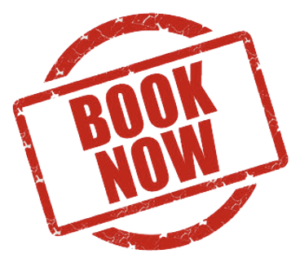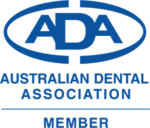You brush your teeth diligently every day, yet when you look in the mirror, your teeth still appear yellow. It’s frustrating and leaves you wondering, “What am I doing wrong?” This concern is more common than you think, and it can shake your confidence in your smile. Let’s explore the possible causes and solutions.
Why Are My Teeth Yellow When I Brush Them Everyday?
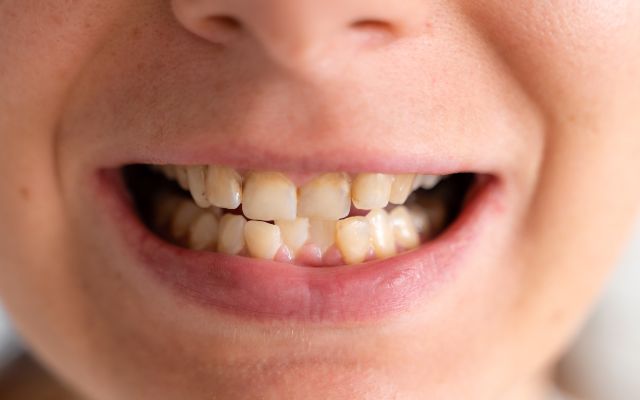

Yellow teeth can result from a variety of reasons, ranging from what you eat to how you care for your teeth.
1. Dietary Factors
The foods and drinks you consume play a significant role in discoloration:
- Staining Beverages: Coffee, tea, red wine, and dark sodas are common culprits. These drinks contain pigments that cling to your enamel, the protective outer layer of your teeth, causing stains over time.
- Acidic Foods: Citrus fruits, vinegars, and other acidic items can erode your enamel, exposing the yellowish dentin underneath. This process makes teeth look dull and yellow even with regular brushing.
2. Oral Hygiene Practices
Brushing alone might not be enough if you’re not doing it effectively. If you rush through your routine or don’t cover all surfaces of your teeth, you may leave behind plaque and stains. Experts recommend brushing for at least two minutes twice daily, using gentle, circular motions.
Plaque often builds up between teeth where your toothbrush can’t reach, and over time, this contributes to discoloration. Flossing daily is essential for a complete clean.
3. Lifestyle Choices
Your habits can significantly impact the appearance of your teeth especially when you smoke or use Tobacco. Nicotine and tar in tobacco products are notorious for staining teeth. Smokers often notice rapid yellowing, and long-term use can lead to brownish discoloration.
4. Aging and Genetics
Over the years, enamel naturally wears away, revealing the yellow dentin beneath. Even if you have excellent oral hygiene, aging can change your smile’s appearance.
Some people are simply predisposed to having yellower teeth due to inherited traits.
5. Medical Conditions and Medications
Antibiotics like tetracycline or doxycycline can cause intrinsic stains when taken during childhood. Other drugs, such as certain antihistamines and blood pressure medications, may also discolor teeth. Moreover, overexposure to fluoride during early development can lead to discoloration, often appearing as white or yellow streaks.
6. Underlying Dental Issues
Plaque that isn’t removed can harden into tartar, which is much more difficult to clean and often appears yellow. Routine cleanings by a dentist are crucial to prevent this.
The Different Types of Tooth Discoloration
Extrinsic Stains (Surface-Level Yellowing)
Extrinsic stains affect the enamel, the outermost layer of your teeth. They’re often caused by lifestyle choices, like drinking coffee, tea, or red wine, as well as smoking or using other tobacco products. These stains can appear as yellow hues, brown spots, or even white streaks. Since they only impact the surface, extrinsic stains are typically the easiest to treat with professional cleanings or whitening treatments.
Intrinsic Stains (Deep-Rooted Discoloration)
Intrinsic stains originate inside the tooth, affecting the dentin beneath the enamel. They often result from factors like excessive fluoride during childhood, medications such as tetracycline, or physical trauma to a tooth. Unlike extrinsic stains, these discolorations are more stubborn and challenging to treat. Cosmetic procedures, including veneers or crowns, are often necessary to restore a uniform appearance.
Age-Related Stains (The Natural Yellowing Process)
As you age, your teeth are prone to a combination of intrinsic and extrinsic discoloration. Over time, enamel naturally thins, exposing the yellowish dentin underneath. Years of consuming staining foods and drinks, along with other habits like smoking, further amplify the yellowing. Age-related stains typically develop gradually but can be addressed with treatments tailored to both surface and internal discoloration.
Treating Tooth Yellowing At Home
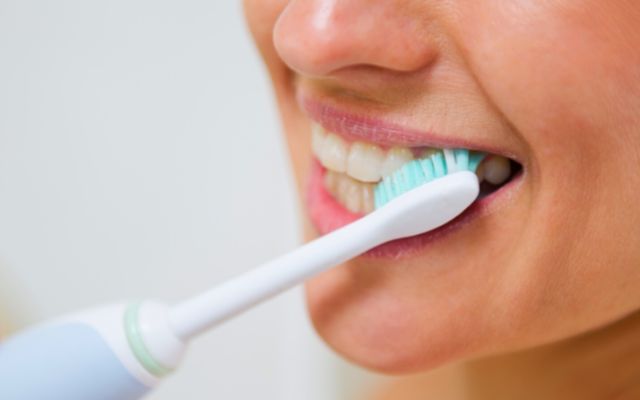

Changing your oral hygiene routine and using teeth whitening with natural solutions that will be outlined below is the best way to deal with discolored teeth:
Alter Your Dental Routine
To get rid of yellow teeth, modify your dental hygiene routine. If you want your teeth to look their best and remain healthy, you should brush them twice a day and after meals instead of just once. To eliminate tooth-damaging germs, brush your teeth after waking up and before eating. However, brushing too often may harm the gums and allow germs to attack the teeth and gums.
The Australian Dental Association explains how to brush your teeth. In addition, while brushing your teeth, the brush should be at a 45-degree angle to the gums. Food trapped in the teeth won’t be removed by straight-line brushing. Thus, you should brush vertically, clockwise, and at a 45-degree angle.
Do not use a hard toothbrush or brush too hard, which may harm your teeth and gums and encourage germs to grow. Dental floss should also be used to remove food from between the teeth that the brush cannot reach.
Whitening Toothpaste
You may also use whitening toothpaste to improve the appearance of your smile. These kinds of toothpaste often include compounds like fluoride to fight germs and sodium polyphosphate to help remove stains from teeth. Hydroxyapatite is also commonly used to help protect enamel.
Teeth Whitening At Spring Orchid Dental Clinic
The safest and most effective way to achieve a whiter, brighter smile is by visiting Spring Orchid Dental for professional teeth whitening.
Our dental clinic offers tailored whitening solutions based on your teeth and aesthetic goals. If you’re ready to enhance your smile in a safe and effective way, the team at Spring Orchid Dental is here to help. Contact us today to book your consultation and discover the best whitening treatment for your smile!
FAQs
Why Is My Toothbrush Yellow?
Bacteria-laden toothbrushes may spread an infection farther into the tooth’s cavity. Gums issues and easily discolored teeth are just some of the oral health issues that may result from a buildup of bacteria.
What’s The Impact Of Yellow Teeth?
A long-term yellow discoloration on the teeth may weaken the enamel and increase the risk of decay. Inflammation of the gums, bleeding, and swelling are all symptoms of gingivitis, which may be triggered by having yellow teeth. Attachment of bacteria to teeth results in the production of toxins that irritate the gums and lead to periodontitis.
What Drug Turns Teeth Yellow?
Tetracycline, a common antibiotic, discolors teeth. This antibiotic has the potential to discolor our teeth irreversibly. Children under the age of 12 should avoid Tetracycline if possible because of the risk of tooth discoloration.


